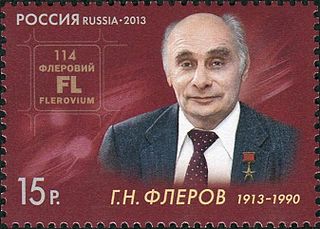
The Soviet Union, officially the Union of Soviet Socialist Republics (USSR), was a Marxist-Leninist sovereign state in Eurasia that existed from 1922 to 1991. Nominally a union of multiple national Soviet republics, its government and economy were highly centralized. The country was a one-party state, governed by the Communist Party with Moscow as its capital in its largest republic, the Russian Soviet Federative Socialist Republic. Other major urban centres were Leningrad, Kiev, Minsk, Tashkent, Alma-Ata, and Novosibirsk. It spanned over 10,000 kilometres (6,200 mi) east to west across 11 time zones, and over 7,200 kilometres (4,500 mi) north to south. It had five climate zones: tundra, taiga, steppes, desert and mountains.
The transuranium elements are the chemical elements with atomic numbers greater than 92, which is the atomic number of uranium. All of these elements are unstable and decay radioactively into other elements.
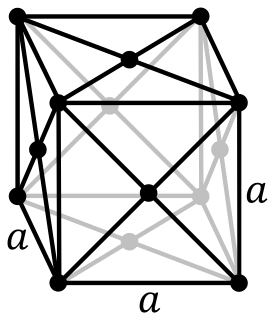
Flerovium is a superheavy artificial chemical element with the symbol Fl and atomic number 114. It is an extremely radioactive synthetic element. The element is named after the Flerov Laboratory of Nuclear Reactions of the Joint Institute for Nuclear Research in Dubna, Russia, where the element was discovered in 1998. The name of the laboratory, in turn, honours the Russian physicist Georgy Flyorov. The name was adopted by IUPAC on 30 May 2012.

Igor Vasilyevich Kurchatov, was a Soviet nuclear physicist who is widely known as the director of the Soviet atomic bomb project. Along with Georgy Flyorov and Andrei Sakharov, Kurchatov is known as the "father of the Soviet atomic bomb" and, later, "the father of the Soviet Nuclear Missile" for his directorial role in a clandestine Soviet nuclear program formed during World War II in the wake of the USSR's discovery of the Western Allied efforts to develop nuclear weapons. After nine years of covert development, as well as Soviet spies successfully infiltrating the Manhattan Project, the Soviet Union successfully tested its first nuclear weapon, codenamed First Lightning at the Semipalatinsk Test Range in 1949. In 1954 he was awarded the USSR State Prize in physics.
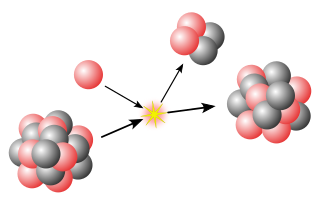
Spontaneous fission (SF) is a form of radioactive decay that is found only in very heavy chemical elements. The nuclear binding energy of the elements reaches its maximum at an atomic mass number of about 56; spontaneous breakdown into smaller nuclei and a few isolated nuclear particles becomes possible at greater atomic mass numbers.

The Ioffe Physical-Technical Institute of the Russian Academy of Sciences is one of Russia's largest research centers specialized in physics and technology. The institute was established in 1918 in Petrograd and run for several decades by Abram Ioffe. The Institute is a member of the Russian Academy of Sciences.
The Joint Institute for Nuclear Research, in Dubna, Moscow Oblast, Russia, is an international research center for nuclear sciences, with 5500 staff members, 1200 researchers including 1000 Ph.Ds from eighteen states, members of the institution. Most scientists, however, are eminent Russian scientists.

The Soviet atomic bomb project was the classified research and development program that was authorized by Joseph Stalin in the Soviet Union to develop nuclear weapons during World War II.

The Worldwar series is the fan name given to a series of alternate history science fiction novels by Harry Turtledove. Its premise is an alien invasion of Earth during World War II, and includes Turtledove's Worldwar tetralogy; as well as the Colonization trilogy; and the novel Homeward Bound. The series' time-span ranges from 1942–2031. The early series was nominated for a Sidewise Award for Alternate History in 1996.

The Order of the Red Banner of Labour was an order of the Soviet Union established to honour great deeds and services to the Soviet state and society in the fields of production, science, culture, literature, the arts, education, health, social and other spheres of labour activities. It is the labour counterpart of the military Order of the Red Banner. A few institutions and factories, being the pride of Soviet Union, also received the order. The Order of the Red Banner of Labour began solely as an award of the Russian SFSR on December 28, 1920. The all-Union equivalent was established by Decree of the Presidium of the Supreme Soviet on September 7, 1928 and approved by another decree on September 15, 1928. The Order's statute and regulations were modified by multiple successive decrees of the Presidium of the Supreme Soviet of the USSR, on May 7, 1936, on June 19, 1943, on March 28, 1980, and on July 18, 1980.

Dinamo is a Moscow Metro station on the Zamoskvoretskaya line. It opened on 11 September 1938 as part of the second stage of the system. It was named for the former Dinamo Stadium, the home stadium of FC Dynamo Moscow. Passengers may make out-of-station transfers to the Bolshaya Koltsevaya and Kalininsko-Solntsevskaya lines via Petrovsky Park station.
The Kurchatov Medal, or the Gold Medal in honour of Igor Kurchatov is an award given for outstanding achievements in nuclear physics and in the field of nuclear energy. The USSR Academy of Sciences established this award on February 9, 1960 in honour of Igor Kurchatov and in recognition of his lifetime contributions to the fields of nuclear physics, nuclear energy and nuclear engineering.
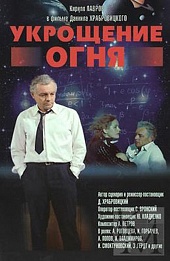
Taming of the fire is a 1972 film, directed by Daniil Khrabrovitsky and starring Kirill Lavrov.
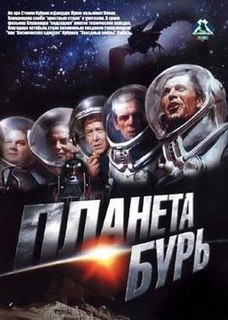
Planeta Bur is a 1962 Sovcolor Soviet science-fiction film scripted by Alexander Kazantsev from his novel, and co-scripted and directed by Pavel Klushantsev.
Georgy is a masculine given name, derived from the Greek name Georgios. It is also occasionally used as a surname. It corresponds to the English name George. The name Georgi is the most used masculine name in Bulgaria and the most given to new-born boys in the country, with the family name Georgiev/Georgieva also widely used. In Romanian the name is written as Gheorghe to signify the hard g sound. Russian derivations from Georgios are also Yegor and Yury. The name Georgy may refer to:

Konstantin Antonovich Petrzhak, alternatively Pietrzak; was a Russian nuclear physicist of Polish ethnicity, and a professor of physics at the Saint Petersburg State University.

Vadim Semyonovich Spiridonov was a Soviet film actor, film director. Honored Artist of the RSFSR (1984). Winner of the State Prize of the USSR (1979), Winner of the Lenin Komsomol Prize (1980).
